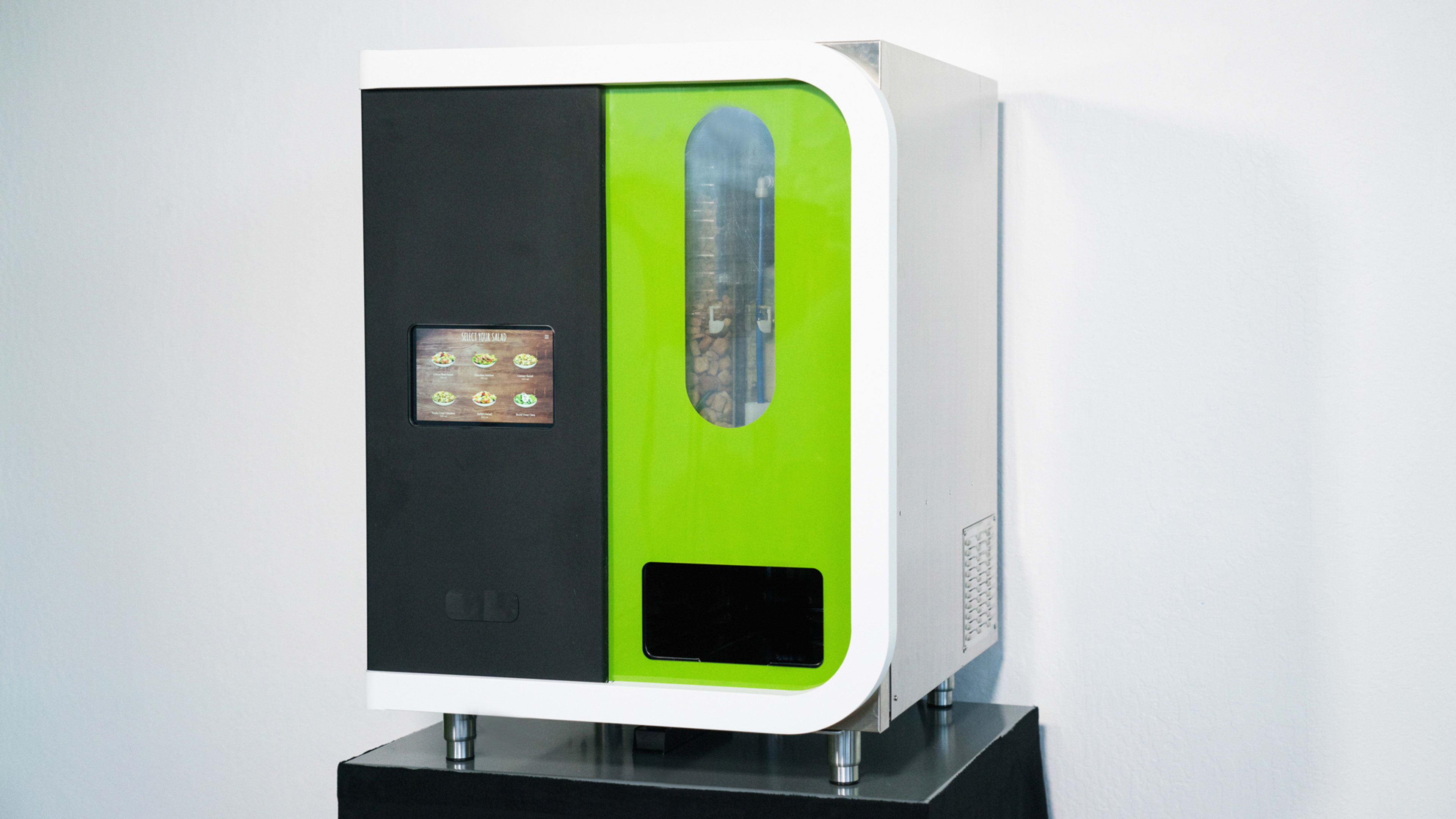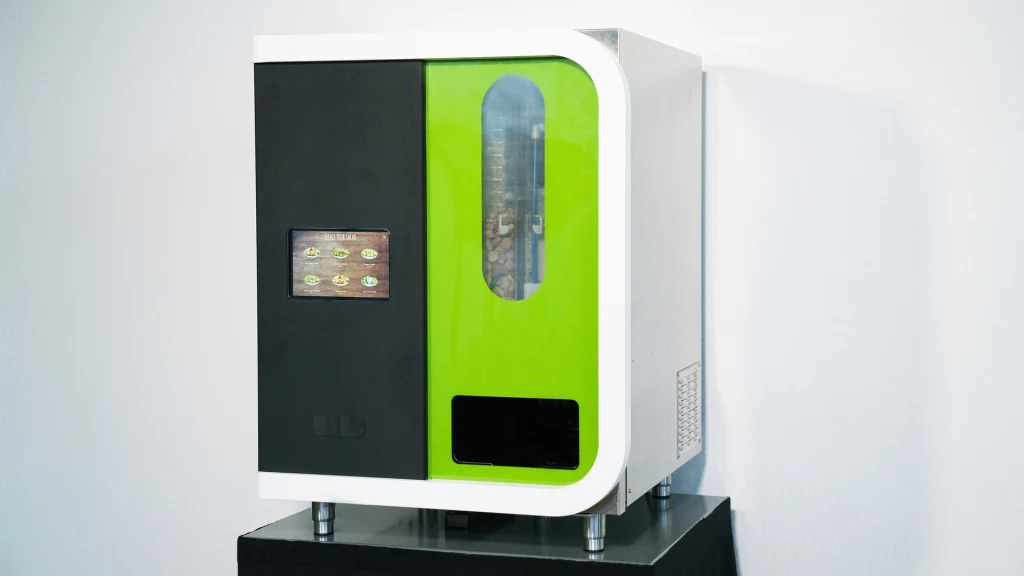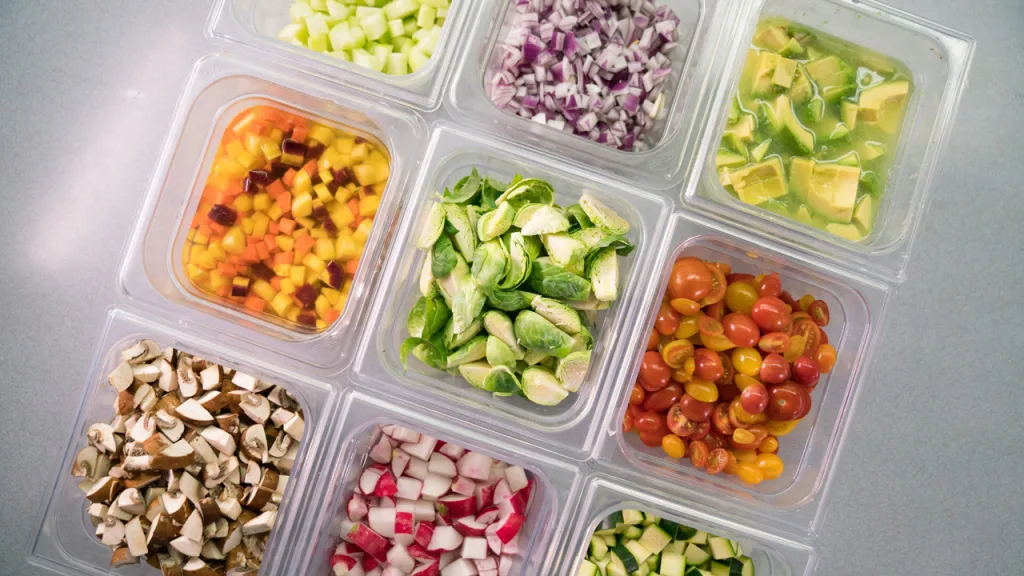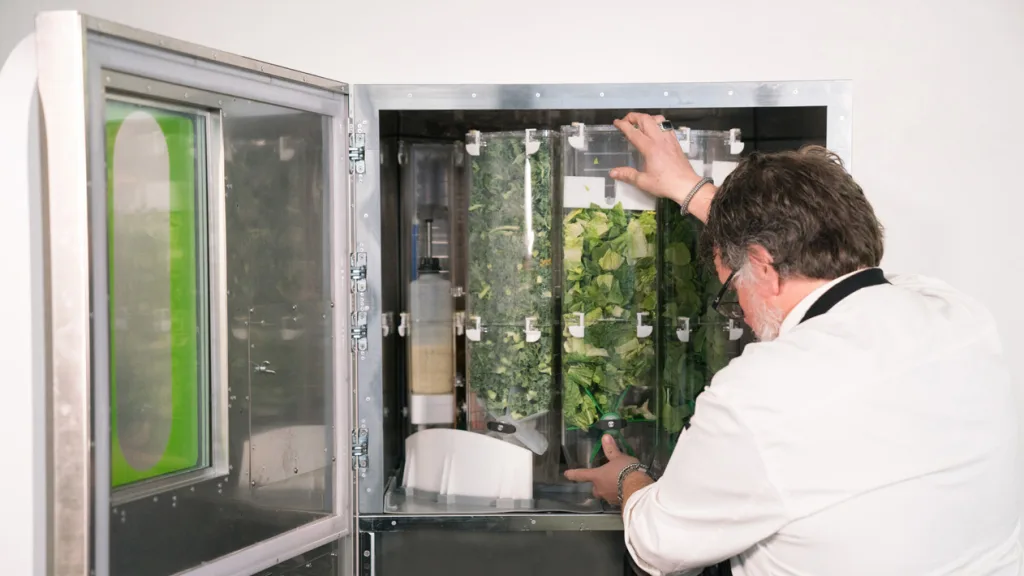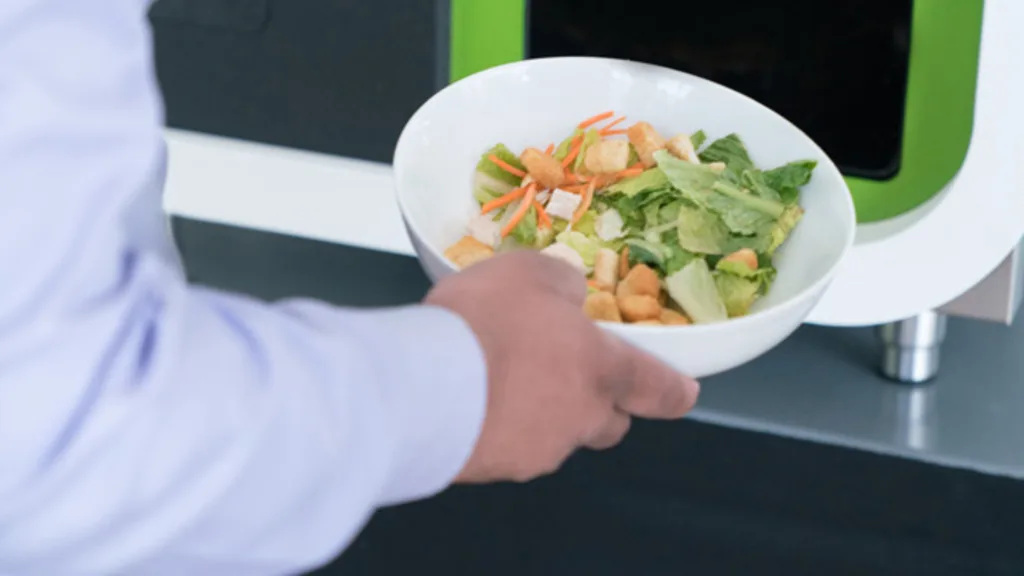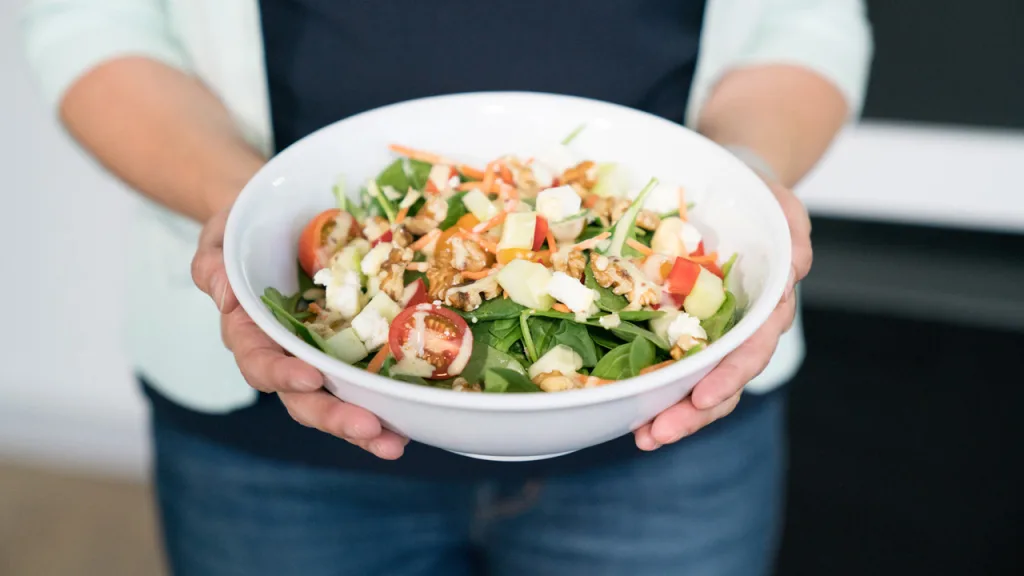If you want a salad from the market at the Calafia Cafe in Palo Alto, a restaurant, and market run by the ex-Google chef Charlie Ayers, you can pick a pre-packaged salad from a case or visit a salad bar. But you also now have a third option: Sally, a salad-making robot, can prepare one of a thousand possible custom salads in around 60 seconds.
“The issue with packaged salads is that people can’t customize them,” says Deepak Sekar, inventor of the robot and founder and CEO of Chowbotics, the startup marketing Sally. On the robot’s touch screen, customers can choose a chef-created salad, and the robot will carefully measure out each pre-chopped ingredient–or someone can select any combination they want of 21 ingredients including kale, seared chicken breast, olives, and walnuts.
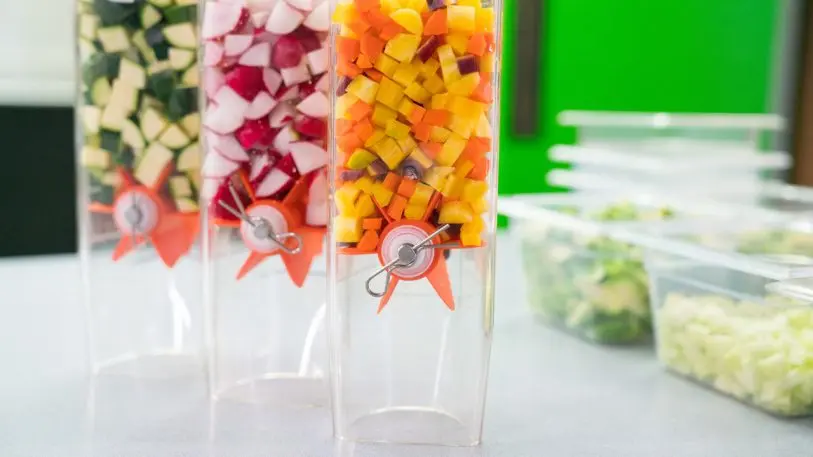
If the current trial of the robot at Calafia goes well, the market may eventually stop making packaged salads and could also decide to scrap the salad bar. The machine avoids any of the potential germs of customers handling food at a self-serve station and keeps produce refrigerated, helping avoid food waste.
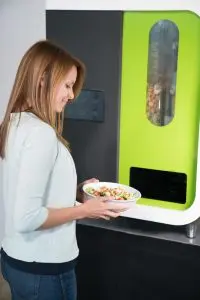
In one beta test, at the Silicon Valley startup hub GSVLabs, “we were easily selling 40 or 50 salads a day,” he says. “That’s a pretty small office, like 150 people. We’re finding in bigger offices people end up eating more, and many times we get requests to refill the machine in the middle of the workday because it runs out so quickly.” A third party, either a catering company or a restaurant, handles refilling ingredients.
Ayers and another former Google chef worked with the startup to create a set of recipes to program into the robot, including unusual options like a green tea-coconut dressing (in theory, the coconut oil helps the caffeine in the green tea more easily reach the brain, energizing office workers after lunch). Chowbotics has tweaked the product as it runs beta tests. After a few people forgot to put down a bowl before ordering their salad–and cherry tomatoes flew everywhere–engineers redesigned the machine so it won’t dispense a salad unless a bowl is in place.
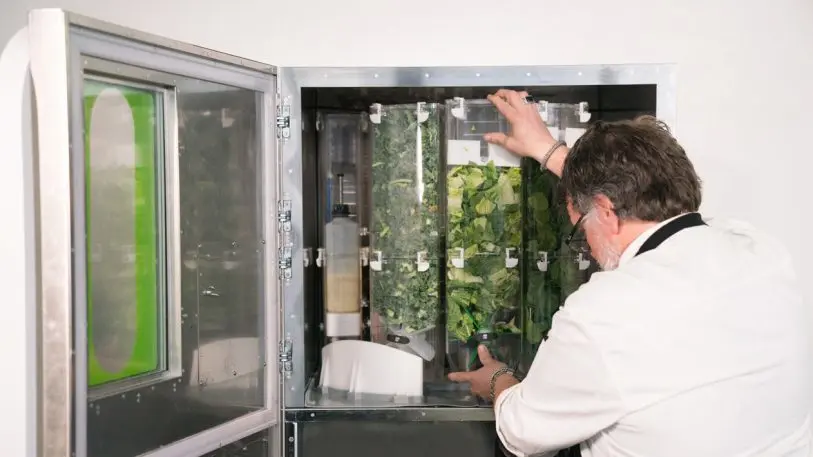
Fast-food restaurants, which typically only offer a few options for salads, have also already expressed interest. Sekar believes that the robot could also be useful in places like the Bay Area where restaurants struggle to keep cooks because of the high cost of living. The robot can’t make a salad fully from scratch–humans still need to chop and peel the ingredients and then deliver them. But Sekar believes that could also be automated in three to five years as vision and AI tech improves enough to adjust to the different shape and size of an individual vegetable or nut. For better or worse, the technology will reduce the need for labor in restaurants.
Sekar also sees a market in popular quick-service salad chains. “If you look at a Sweetgreen, there’s a huge line going out of the door all the time,” he says. “What we are hearing is that many of their customers walk away because they don’t want to wait for that long. These salad chains actually want to put a Sally inside as well. So if some people don’t want to wait in the line, they can go to a Sally that can make a salad far faster than a human.”
Recognize your brand’s excellence by applying to this year’s Brands That Matter Awards before the early-rate deadline, May 3.
